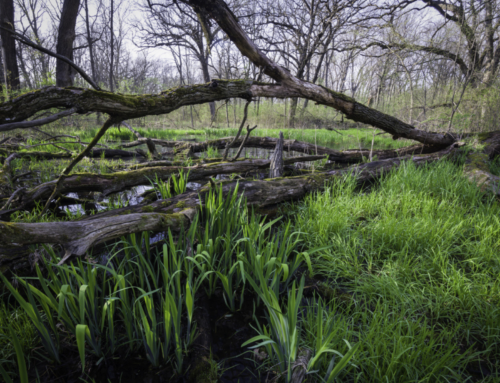October 16, 2015
Honorable Kimberly D. Bose
Secretary
Federal Energy Regulatory Commission
888 First Street, NE
Washington, DC 20426
Re: Tennessee Gas Pipeline Company, L.L.C. Docket No. PF14-22-000
Comments on Environmental Issues for the Planned Northeast Energy Direct Project
Dear Secretary Bose,
The Connecticut River Watershed Council, Inc. (CRC) hereby submit these comments in response to FERC’s “Notice of Intent to Prepare an Environmental Impact Statement for the Planned Northeast Energy Direct Project, Request for Comments on Environmental Issues, and Notice of Public Scoping Meetings” dated June 30, 2015. CRC has reviewed portions of Northeast Energy Direct Project’s revised “Draft Resource Reports and Appendices” prepared by Kinder Morgan, owner of the Tennessee Gas Pipeline Company, dated July 24, 2015.
CRC is a nonprofit citizen group that was established in 1952 to advocate for the protection, restoration, and sustainable use of the Connecticut River and its four-state watershed. The interests and goals represented by CRC include, but are not limited to, improving water quality; enhancing habitat for fish and other aquatic biota; safeguarding and improving wildlife habitat; protecting threatened and endangered species; protecting wetlands; preserving undeveloped shore lands; enhancing public recreation and promoting recreational safety; protecting aesthetic values; protecting archeological, cultural, and historical resources; fostering sustainable economic development, energy production, and preserving the local tax base along the Connecticut River and its tributaries.
The Connecticut River watershed boundaries encompass the Silvio O. Conte National Fish and Wildlife Refuge, which was designated in 1991 as the first watershed-wide refuge of its kind in the country. The Connecticut River was named one of just 14 American Heritage Rivers by President Clinton in 1998, due to its historic and cultural significance to the nation. It also became the first National Blueway, designated by Secretary of Interior Ken Salazar, in 2012 due to the collaboration of the over 40 partner organizations working in our watershed.
The Northeast Energy Direct project would involve the construction and operation of approximately 418 miles of new pipeline, pipeline looping and laterals in Pennsylvania, New York, Massachusetts, New Hampshire and Connecticut. Based on our review of the materials presented in the July 24, 2015 resource reports Massachusetts part of Connecticut River watershed: New Hampshire part of Connecticut River watershed: Connecticut part of Connecticut River watershed: As FERC noted in their comments on the July 24, 2015 Draft Resource Reports dated October 8, 2015, there are many details that are still listed as “TBD” in the resource reports. CRC is unable to formulate scoping comments on missing information. We request that FERC require the applicant to complete those sections and that they be published and noticed by FERC with a public comment period. Alternatives Analysis There are a large number of alternatives that should be evaluated as part of the EIR, including the following: Impacts to Wetlands and Waterways Resource Report 2 describes generally the proposed methods that will be used for stream crossings. Our interest is in the construction-related and long-term impacts to the Connecticut River and the many tributaries and wetlands impacted by this project. According to Table 2.2-6, we believe there are 45 stream crossings (and more than 50 wetland crossings) proposed in the Massachusetts part of the Connecticut River watershed, 24 stream crossings in Connecticut, and 46 in the New Hampshire part of the watershed. The majority of river crossings are in coldwater fisheries or high quality waters in Massachusetts and New Hampshire. In Connecticut, most of the waterbody crossings affect Class A and AA waters. Stream crossing methods are listed for each crossing, but the rationale for each crossing is not given. We are not sure why the proposed crossing method for the Westfield and Millers Rivers are type II (Dry crossing Method including Flume and Dam and Pump). The Westfield River is part of the National Wild & Scenic River system. Any impact to this river and its tributaries should be avoided or minimized. In New Hampshire, the 800-foot crossing of Scott Pond in Fitzwilliam, is proposed to have a type II crossing as well. CRC recommends that any crossing of a lake not be subject to dry crossing. Multiple crossings to the same river should be either avoided or minimized. For example, Table 2.2-6 indicates that the Bear River, a coldwater tributary to the Deerfield River in Massachusetts, will be crossed in four separate locations by the pipeline. Moreover, the Bear River will be crossed once for an access road. Five crossings of the same small tributary will have a high impact on this stream. The Deerfield River will be crossed twice, with a total of crossing length of 565 feet. The proposed pipeline will cross many headwater streams. For example, in New Hampshire, the pipeline will cross several tributaries of the Ashuelot River including Snow Brook, Mirey Brook, Roaring Brook, Rice Brook and the headwaters of the South Branch. The applicant should clarify how they will approach these important headwater streams. Seasonally, streams such as those mentioned in the Ashuelot watershed, provide spawning habitat for native species. In addition, the timing of the disturbance will affect the success or failure of the spawn during the construction year. FERC has requested information on timing and we concur that his is an important detail to review. CRC recommends that FERC require the Applicant to document how pre-construction conditions will be restored at each stream crossing location and how pre- and post-construction conditions will be monitored. Stream restoration activities should ensure that the Applicant is taking appropriate measures to avoid and/or reduce short-term and long-term impacts to stream morphology and hydrology. Protection of Drinking Watershed Lands in Connecticut A portion of the 300 Line Connecticut Loop will impact over 250 acres of public drinking water supply land owned by the Metropolitan District Commission. This land is classified as Class I and Class II water company land and is protected and preserved by Connecticut state statute to protect the state’s water resources. There was neither an alternative proposed to this route nor was the permit required according to CGS 25-32 listed in Table 1.6-1. Impacts to endangered species The U.S. Fish and Wildlife Service has identified the Ashuelot River as one of the four most important refuges for the federally-endangered dwarf wedgemussel (Alasmidonta heterodon). Although the dwarf wedgemussel is listed in Table 3.4-1, it was not listed in Table 3.4-6, which lists species in the vicinity of the project in NH. If dwarf wedgemussel are not in the vicinity of the planned pipeline, impacts to this species during and after construction of the pipeline because of disturbance to upstream tributaries should still be evaluated. Cumulative impacts Tributaries to the Connecticut River support coldwater fisheries. This habitat is maintained in part by shading provided by tree cover. The proposed construction and maintenance of the pipeline right of way will require that the pipeline route be kept clear of tree cover. The cumulative impact of construction and permanent right of way maintenance on cold water habitat must be fully evaluated and mitigated. The proposed route will create a permanently cleared swath through forest habitats, and this will have a detrimental effect on interior forest species. Pipeline corridors can act as gateways for the spread of invasive species which will have a negative impact on native flora and fauna, and biodiversity. The EIS must evaluate the cumulative impact on interior-dependent species as well as the impact on the spread of invasive species. The proposed route should attempt to avoid interior forest habitats. Mitigation options This is a very large project that covers a wide swath of our watershed. Under typical conditions, each stream crossing for a project would get detailed scrutiny by state and local resource agencies and boards. Due to the magnitude of the project, there is no way each impact is going to be carefully considered and mitigated. We believe there is no way to properly mitigate the impacts of this project. Certainly, any mitigations options offered by the proponent should be on a large enough scale that real benefits can happen. Agency Contacts The Ashuelot River is an enrolled river in the NH Rivers Management and Protection Program (RMPP). As such, it has special status under New Hampshire law and is specifically empowered to review proposals to NH DES that impact the river and its orderly development. Under the NH program, a Local River Advisory Committee (LRAC) comprised of citizens appointed by the selectboards of all the towns through which the Ashuelot River watershed flows is established. Appendix A of the resource reports indicates that the proponent has contacted the Rivers Coordinator for NH Department of Environmental Services. If the applicant has not also contacted the Ashuelot River Local River Advisory Committee, CRC recommends that they do so. No group of people in the Ashuelot watershed knows the intimate details of the river like the members of the Advisory Group. We appreciate the opportunity to provide scoping comments. We can be reached by email at adonlon@ctriver.org (Massachusetts), ddeen@ctriver.org (New Hampshire), and acharamut@ctriver.org (Connecticut). Sincerely, MA River Steward David L. Deen Upper Valley River Steward Alicea Charamut CT River Steward [1] CRC notes that we found the organization of the resource reports and especially the resource maps very cumbersome to sort through. It would be helpful to know the contents of each electronic file so that we don’t have to open and close and scan through large files so many times. Hot-links should be embedded in the .pdf files.
Andrea F. Donlon







